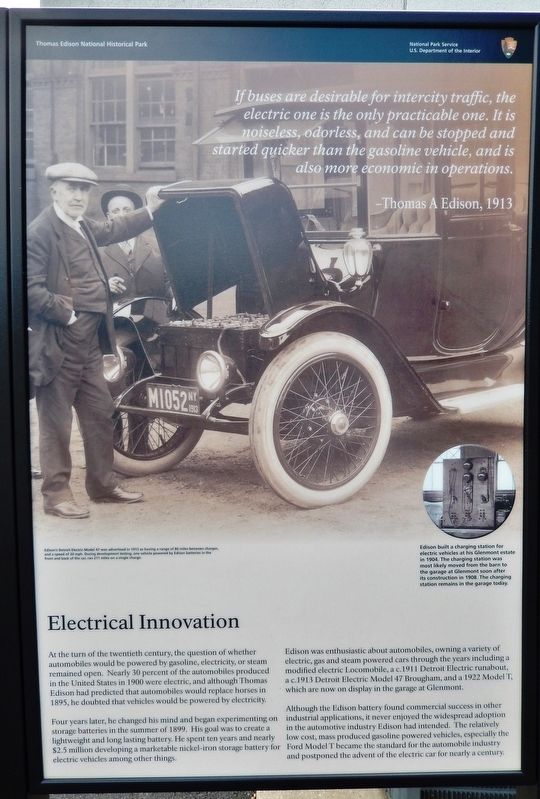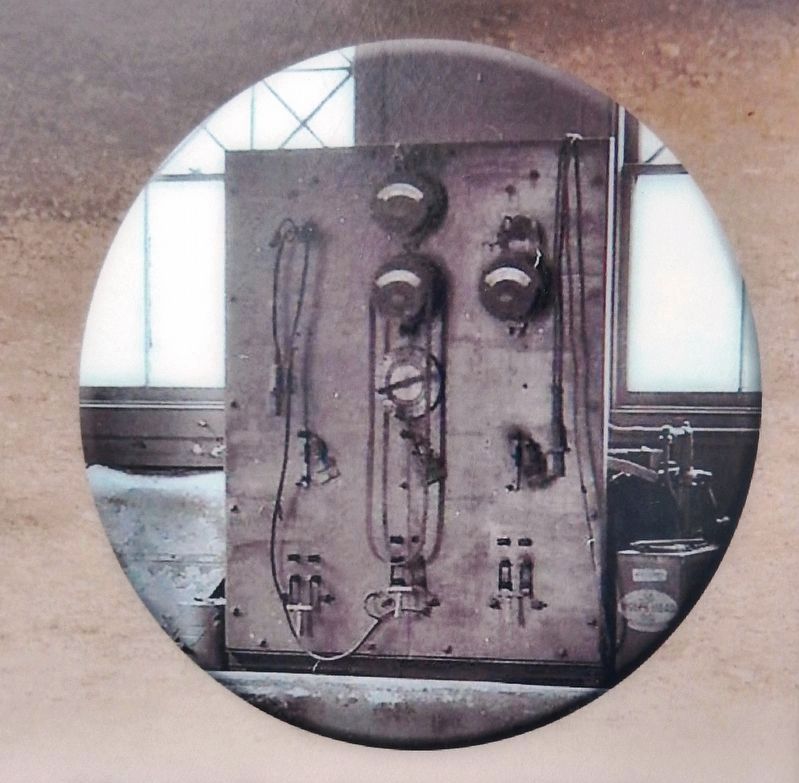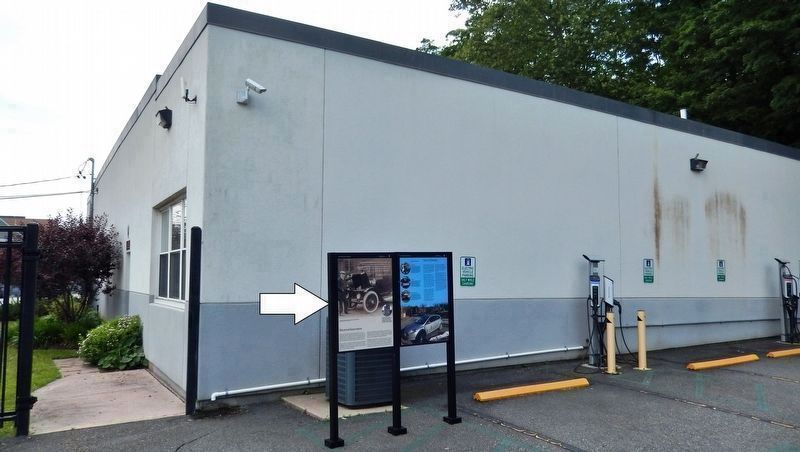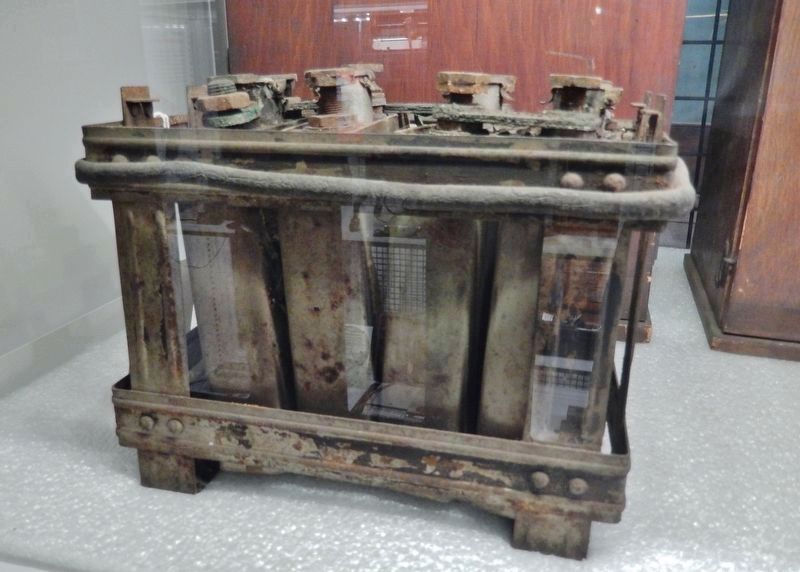West Orange in Essex County, New Jersey — The American Northeast (Mid-Atlantic)
Electrical Innovation
Thomas Edison National Historical Park
If buses are desirable for intercity traffic, the electric one is the only practicable one. It is noiseless, odorless, and can be stopped and started quicker than the gasoline vehicle, and is also more economic in operations.
-Thomas A Edison, 1913
At the turn of the twentieth century, the question of whether automobiles would be powered by gasoline, electricity, or steam remained open. Nearly 30 percent of the automobiles produced in the United States in 1900 were electric, and although Thomas Edison had predicted that automobiles would replace horses in 1895, he doubted that vehicles would be powered by electricity.
Four years later, he changed his mind and began experimenting on storage batteries in the summer of 1899. His goal was to create a lightweight and long lasting battery. He spent ten years and nearly $2.5 million developing a marketable nickel-iron storage battery for electric vehicles among other things.
Edison was enthusiastic about automobiles, owning a variety of electric, gas and steam powered cars through the years including a modified electric Locomobile, a c.1911 Detroit Electric runabout, a c.1913 Detroit Electric Model 47 Brougham, and a 1922 Model T, which are now on display in the garage at Glenmont.
Although the Edison battery found commercial success in other industrial applications, it never enjoyed the widespread adoption in the automotive industry Edison had intended. The relatively low cost, mass produced gasoline powered vehicles, especially the Ford Model T became the standard for the automobile industry and postponed the advent of the electric car for nearly a century.
Erected by National Park Service, U.S. Department of the Interior.
Topics. This historical marker is listed in these topic lists: Industry & Commerce • Science & Medicine.
Location. 40° 47.063′ N, 74° 14.057′ W. Marker is in West Orange, New Jersey, in Essex County. Marker can be reached from Main Street south of Edisonia Terrace, on the right when traveling south. Marker is located near the Thomas Edison National Historical Park Visitor Center, at the south end of the parking lot on the west side of Main Street. Touch for map. Marker is at or near this postal address: 211 Main Street, West Orange NJ 07052, United States of America. Touch for directions.
Other nearby markers. At least 8 other markers are within walking distance of this marker. Access Granted (here, next to this marker); The Truck of the Second Commercial Electric Railroad Locomotive. (within shouting distance of this marker); The Black Maria (within shouting distance of this marker); The Truck of the First Commercial Electric Railroad Locomotive.
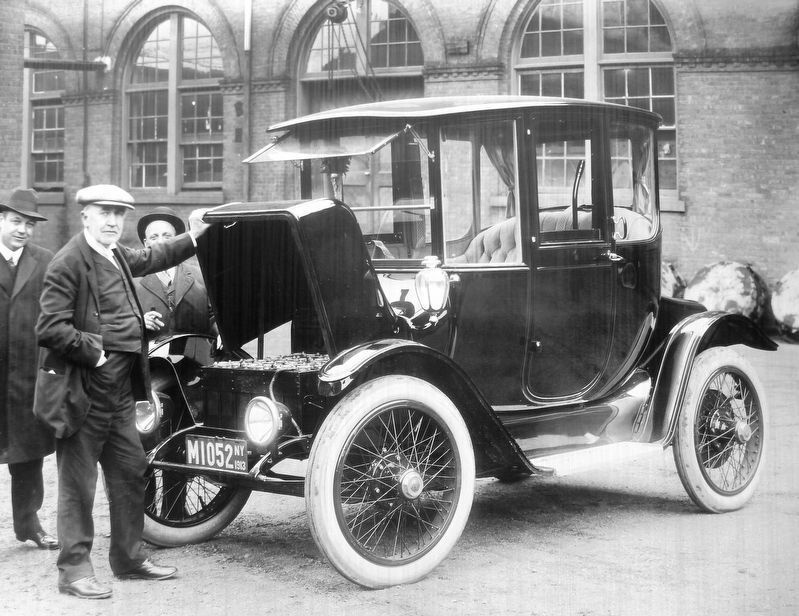
2. Marker detail: Edison’s Detroit Electric Model 47
Edison’s Detroit Electric Model 47 was advertised in 1913 as having a range of 80 miles between charges, and a speed of 20 mph. During development testing, one vehicle powered by Edison batteries in the front and back of the car, ran 211 miles on a single charge.
Also see . . . Edison Storage Battery. Rutgers Universite website entry:
During the first decade of the twentieth century, Edison spent much of his time developing a storage battery that he intended for use in electric automobiles. However, it took him a decade to develop a commercially viable iron-nickel battery and by that time automobiles powered by internal combustion engines had become dominant. Edison did find an extensive market for his battery in a variety of industrial uses, and it was the most successful product of his later life. (Submitted on July 1, 2019, by Cosmos Mariner of Cape Canaveral, Florida.)
Credits. This page was last revised on May 2, 2022. It was originally submitted on July 1, 2019, by Cosmos Mariner of Cape Canaveral, Florida. This page has been viewed 160 times since then and 19 times this year. Photos: 1, 2, 3, 4, 5. submitted on July 1, 2019, by Cosmos Mariner of Cape Canaveral, Florida.
